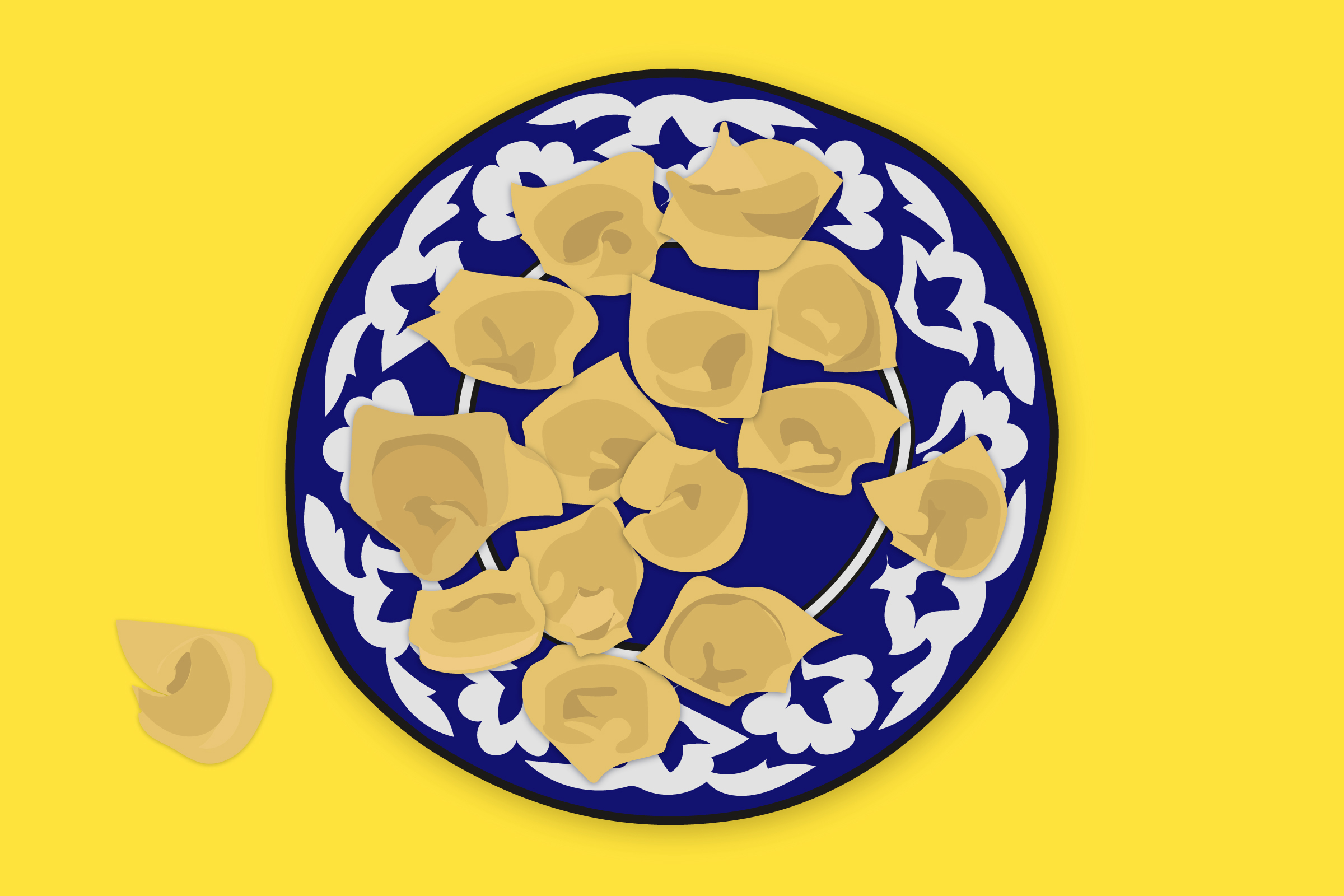I was 10 when I first tried folding dushpara. My mom had set up a cooking session with me and my savta (grandmother), wanting her to teach me the beloved family recipe. I watched my savta’s hands, criss-crossed with veins, wrinkled (like a giraffe, I used to tell her, not completely sure why), twist and fold and pinch each dumpling in one artful motion, none of the filling seeping out. I tried to copy her, pinching and folding and twisting, and she would tell me that my ripped, deflated dumplings would be just as yummy as hers, which were upright and filled — the product of years of practice.
I never got better at making them. It’s possible that my skills might have actually regressed. But it never quite mattered to me, because my savta — with her wrinkled giraffe hands, her thick accent that I never noticed until a friend pointed it out to me — and her perfectly formed dushpara were always there. When there was a birthday, a particularly full family Shabbat, a special request, I could always count on dushpara, and I could always count on my savta to make it.
I wrote about dushpara before, describing it as an integral aspect of my identity as a Bukharian Jew. It’s one of my favorite foods, a dumpling dish that my savta would make — and one that my Jewish friends never heard of.
The ingredients are relatively simple: dough, meat filling, and a broth-like sauce. I think that they’re supposed to be eaten on their own, but I liked to act as though they were a soup, ladling the sauce into a bowl, tearing a hole into the dushpara, and making sure that I caught both liquid and filling in one bite.
When my mom set up that cooking session with my savta, I remember feeling confused. My savta was so good at making dushpara, and I was terrible, so there was really no point in teaching me. After all, savtas are immortal, right? Mine even looked the part, dying her hair dark red every week and beating the gray hairs into submission. But eventually, she kept getting hurt — broken back, broken shoulder, broken hip.
When my savta got double pneumonia around December of 2019, it was the first time that I realized she wasn’t going to be around forever. Maybe it was my mind’s way of trying to shield me from the implications of a savta-less reality, or maybe I’m just a really egocentric human being, but I remember, after hearing from my dad that she was sick, wondering if I was ever going to have dushpara again — and realizing that I never quite learned how to make it.
My savta has been in and out of hospitals for the past few months, and a few days ago, she and my saba moved into a nursing home. Before they moved there, I went to visit my savta at the rehabilitation center she was in. It was the first time I’d seen her since July, and her hair was more greyish than red. Her hands, a map of veins and stories that I most closely observed when she was cooking, were almost translucent and dotted with bruises.
My dad had prepped me, told me that my savta might be confused or the conversation might be slow — and it was, at times — but the second I asked her about dushpara, time stood still. Her hair turned red, her hands became sturdy, and her voice became sure as she rattled off a list of ingredients and I typed them frantically into my notes app:
Filling is ground
Beef, fried onions, salt and pepper
Folding is very difficult, you must be crazy to want to do that
Beef, can of chickpeas, cilantro, tomato, fried onion
Of course, these are just tidbits of words and lists that only made sense when an extended family member of mine sent his family’s recipe (they use cherry plums, so it’s slightly different). But I hadn’t felt happier in a long time, knowing that my savta’s dushpara, at least, can truly be immortal now.
I hope that my savta never dies. But I understand now why my mom had us cook together, had me try to learn the recipe straight from the source. And even though I wasn’t able to succeed then, I’m determined to try again. To twist and fold and pinch over and over and over until my dumplings look like hers once did. Upright and proud, created with love by hands that are confident and sure.
Get Madison’s (grandma’s) recipe for dushpara from our friends at The Nosher here.



